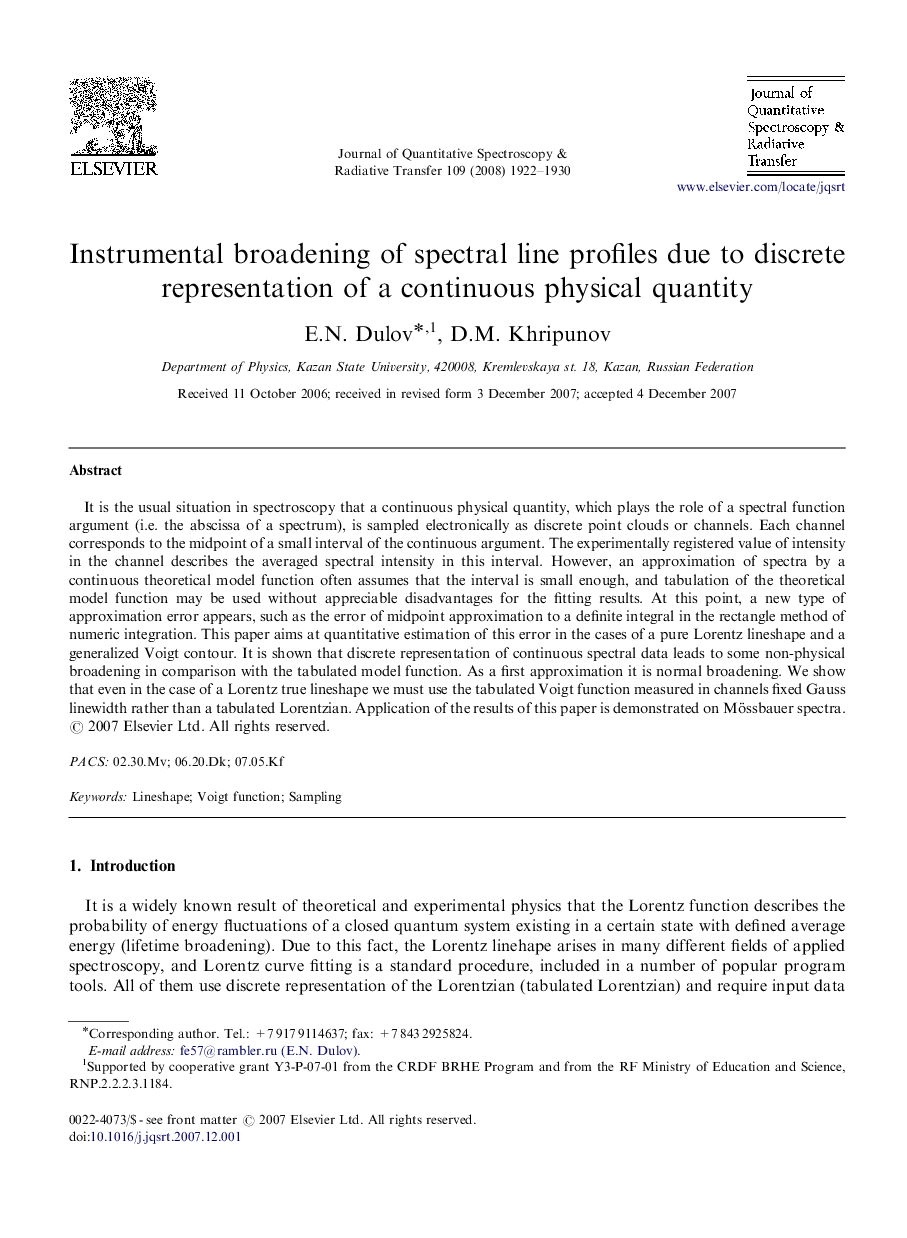| Article ID | Journal | Published Year | Pages | File Type |
|---|---|---|---|---|
| 5430477 | Journal of Quantitative Spectroscopy and Radiative Transfer | 2008 | 9 Pages |
It is the usual situation in spectroscopy that a continuous physical quantity, which plays the role of a spectral function argument (i.e. the abscissa of a spectrum), is sampled electronically as discrete point clouds or channels. Each channel corresponds to the midpoint of a small interval of the continuous argument. The experimentally registered value of intensity in the channel describes the averaged spectral intensity in this interval. However, an approximation of spectra by a continuous theoretical model function often assumes that the interval is small enough, and tabulation of the theoretical model function may be used without appreciable disadvantages for the fitting results. At this point, a new type of approximation error appears, such as the error of midpoint approximation to a definite integral in the rectangle method of numeric integration. This paper aims at quantitative estimation of this error in the cases of a pure Lorentz lineshape and a generalized Voigt contour. It is shown that discrete representation of continuous spectral data leads to some non-physical broadening in comparison with the tabulated model function. As a first approximation it is normal broadening. We show that even in the case of a Lorentz true lineshape we must use the tabulated Voigt function measured in channels fixed Gauss linewidth rather than a tabulated Lorentzian. Application of the results of this paper is demonstrated on Mössbauer spectra.
